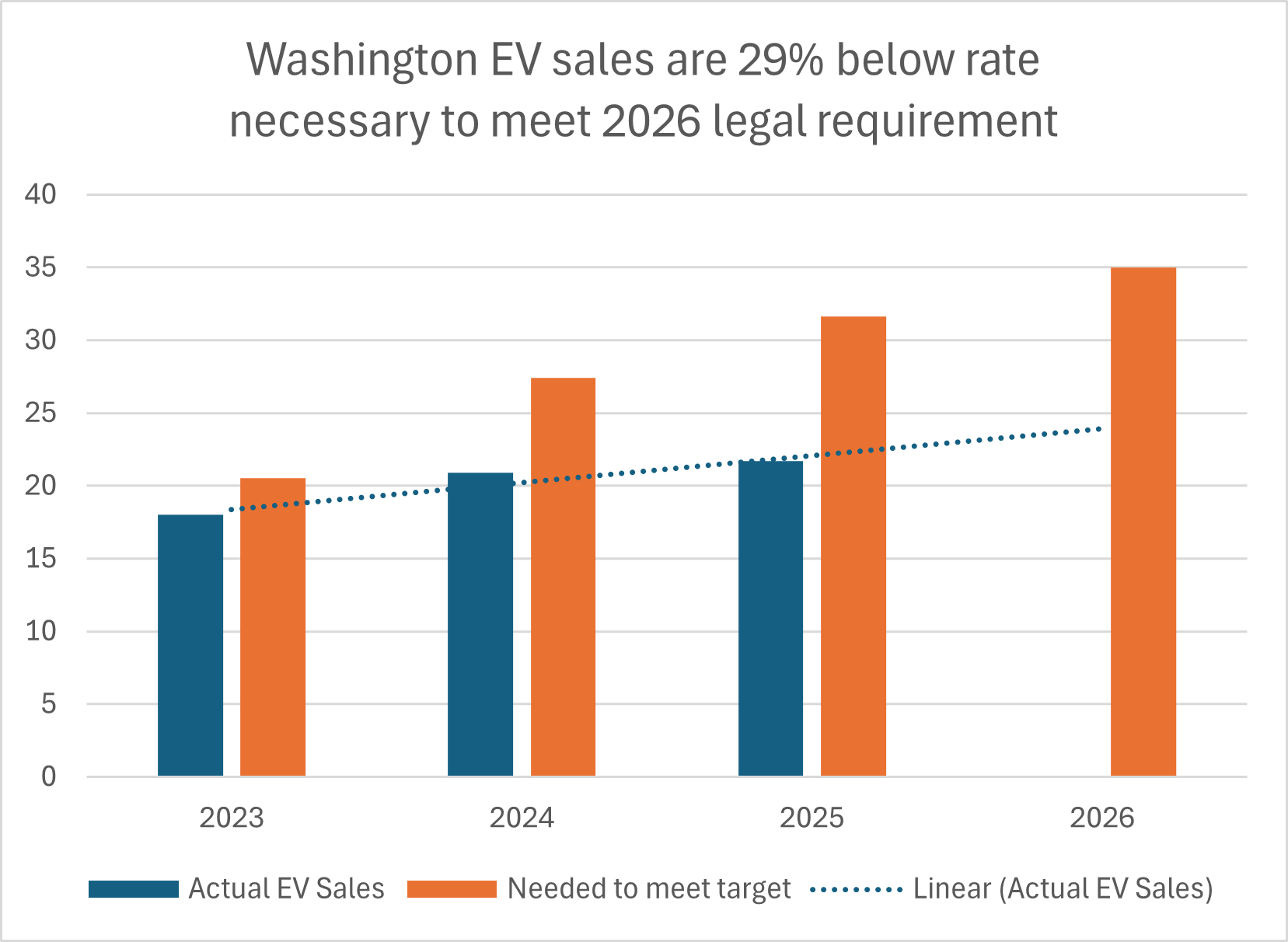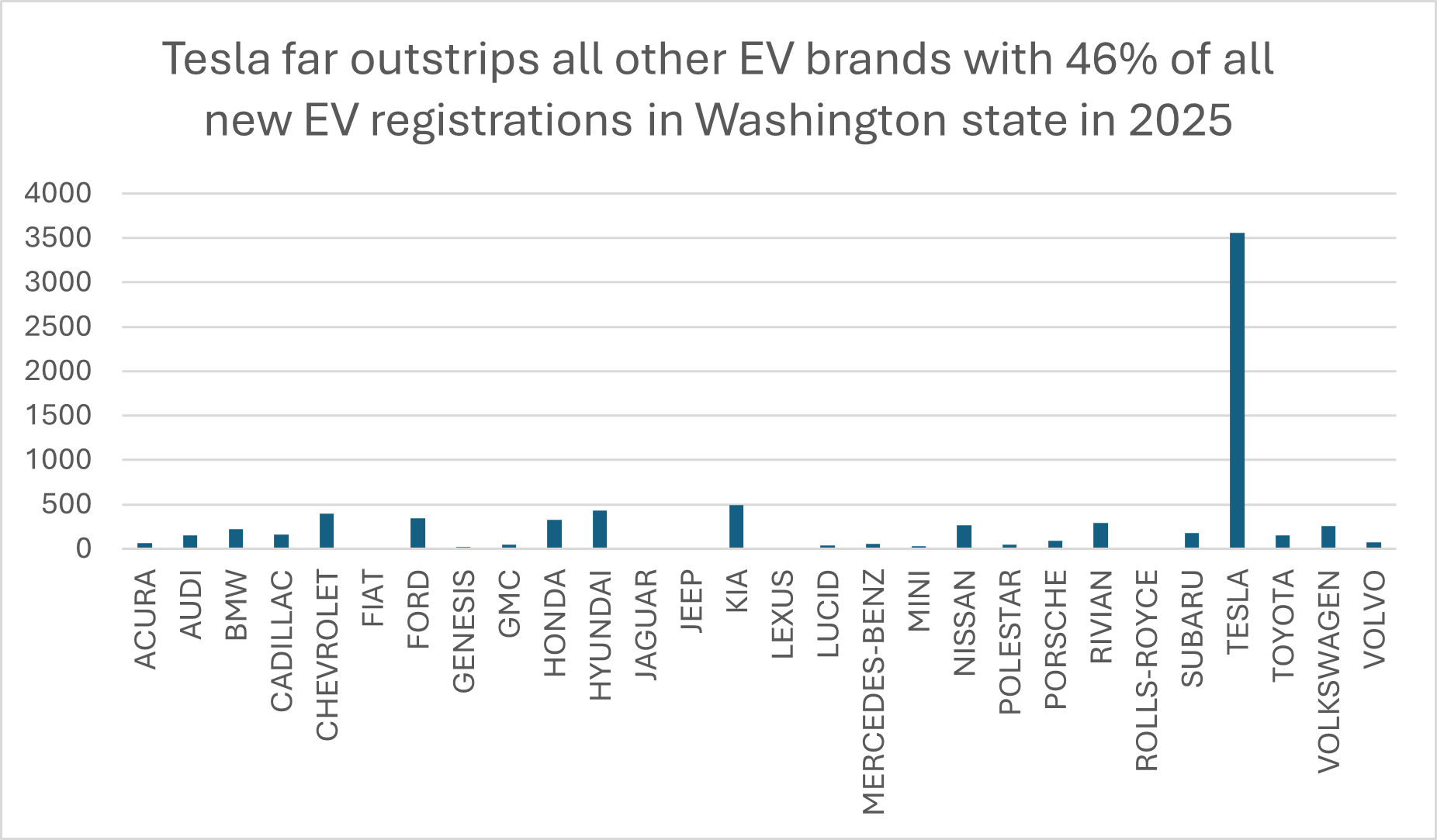Washington electric vehicle sales are far short of the level necessary to meet the requirements that go into effect next year, risking increased car prices or limited vehicle choices in the upcoming years.
For the first two months of 2025, about 21.7 percent of new passenger vehicles and light duty trucks registered in Washington were either electric (EV) or plug-in hybrid (PHEV). That is slightly above 2024, when 20.9 percent were EV or PHEV.
 This is far below the level that is required next year by Washington law requiring that 35 percent of cars sold in Washington be either EV or PHEV next year. At the current rate of increase, about 25 percent of new cars will meet the requirements next year, about 29 percent below the goal.
This is far below the level that is required next year by Washington law requiring that 35 percent of cars sold in Washington be either EV or PHEV next year. At the current rate of increase, about 25 percent of new cars will meet the requirements next year, about 29 percent below the goal.
The law applies to both passenger vehicles and light duty trucks, which are defined as trucks below 8,500 pounds. We used data for all vehicles the state lists as “passenger vehicles” and trucks below that weight class. It is unclear if that is exactly how the state is calculating the requirements, but the number of vehicles that may fall on either side of the definition is limited, so while the percentages may be slightly off, the margin of error is relatively small.
If manufacturers fail to meet the required percentage, they can purchase credits from other manufacturers to make up the difference. They have until 2029 to make up a deficit from 2026, so even if Washington sales fall short next year, it would not necessarily impact vehicle availability immediately.
If a manufacturer fails to meet the requirements, however, the penalties are steep, equivalent to four times the cost of EV credits. Additionally, since the targets increase rapidly – jumping from 35 percent in 2026 to 43 percent in 2027 and 51 percent in 2028 – a shortfall in any year can quickly become insurmountable.
The requirements are on dealers, not consumers, so purchases made outside the state are not counted toward the required goals. If Washington car dealers find they are not meeting the targets and prices begin to escalate, it could simply encourage people to buy cars in Idaho or elsewhere.
Earlier this year, a bill was introduced to decouple Washington from California’s requirements, but it never received a hearing.
Ironically, the biggest beneficiary of the EV mandate, and the state’s many other EV subsidies, would be Elon Musk and Tesla.

Thus far in 2025, the top selling EV brand – by a long way – is Tesla. About 46 percent of all new EVs registered this year are Teslas. That is slightly lower than 2024, when nearly 51 percent of newly registered EVs in Washington were Teslas.
The second most popular brand is KIA with just 6.4 percent of new EVs.
Vehicle registration data are released on about the 20th of each month, so we will have to wait a few weeks until we see if the recent backlash against Tesla had a sales impact in March.
The sales data indicate that unless Washington legislators modify the mandated targets or decouple from California’s rules, Washington car buyers could be facing increased prices or car shortages in the next few years.



